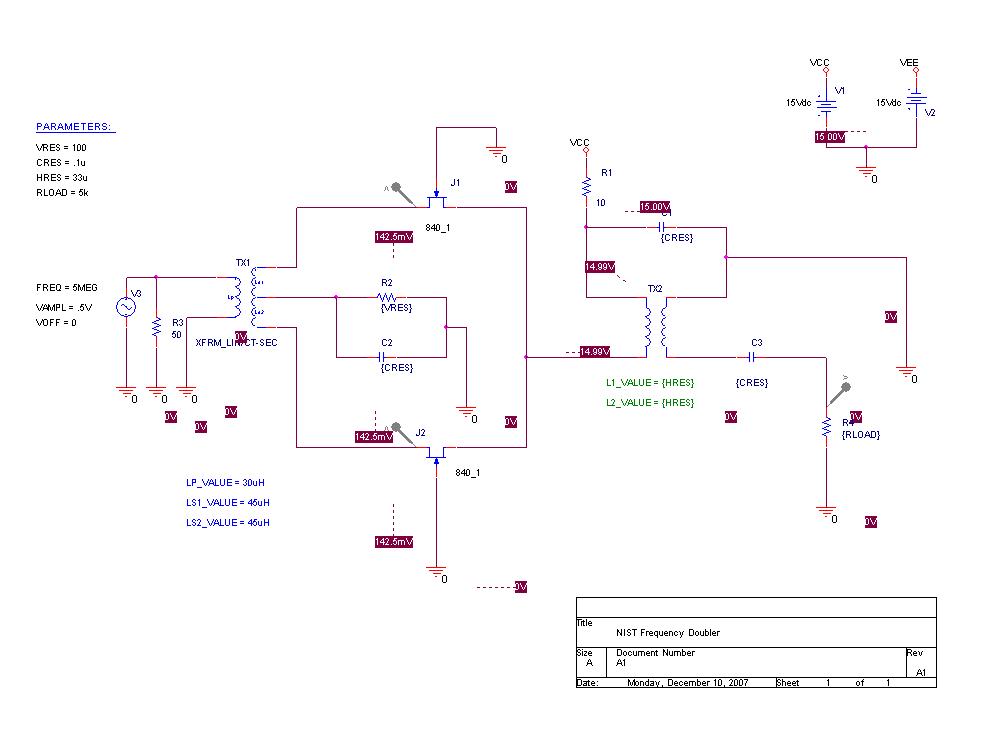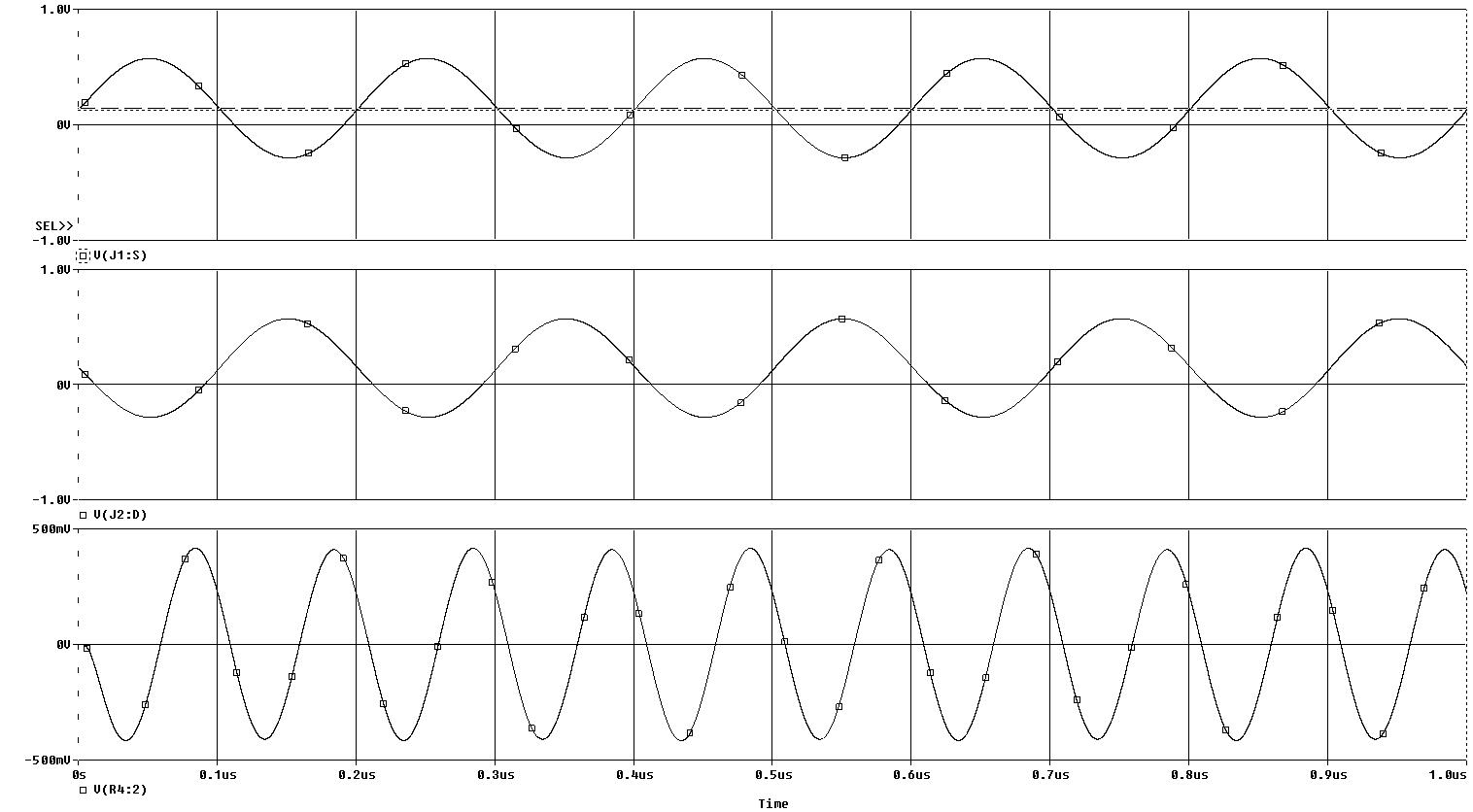|
First, some background.
The members of time-nuts suggested that the Fury Interface board might benefit from using a 5MHz OCXO instead of the 10 MHz, that is specified. I agree with this since I have a bunch of different 5MHz devixes that I'd like to test with the FURY. Bruce Griffiths suggested that I use the NIST frequency doubler in the paper: NIST_Ultra-High_Stability_Synthesizer_For_Diode_Laser_Pumped_Rubidium.pdf This paper, has a tiny schematic of the doubler (above the chart on Page 3, Figure 3) so I had to do a bit of digging to get out the needed parts. This paper: Superimposing_Low-Phase-Noise_Low-Drift_Instrumentation_Techniques_On_RF_Design helped shed some light on the parts. The critical part is the Siliconix Dual FET. Siliconix, it turns out, was bought by Linear Systems and they make a similar part: LS840. Here is a copy of the datasheet. This part is in production and they provide a PSPICE model which is what I used to model the circuit. So, here is the schematic:
|

|
And here are the THD results:
FOURIER COMPONENTS OF TRANSIENT RESPONSE V(VOUT) DC COMPONENT = 8.480375E-04 HARMONIC FREQUENCY FOURIER NORMALIZED PHASE NORMALIZED NO (HZ) COMPONENT COMPONENT (DEG) PHASE (DEG) 1 1.000E+07 4.106E-01 1.000E+00 1.464E+02 0.000E+00 2 2.000E+07 9.307E-04 2.267E-03 4.276E+01 -2.500E+02 3 3.000E+07 7.535E-04 1.835E-03 2.117E+00 -4.370E+02 4 4.000E+07 5.460E-04 1.330E-03 2.871E-01 -5.852E+02 5 5.000E+07 4.382E-04 1.067E-03 -7.983E-01 -7.327E+02 TOTAL HARMONIC DISTORTION = 3.378344E-01 PERCENT Not bad!
|
|
And here are the appropriate waveforms:
|
